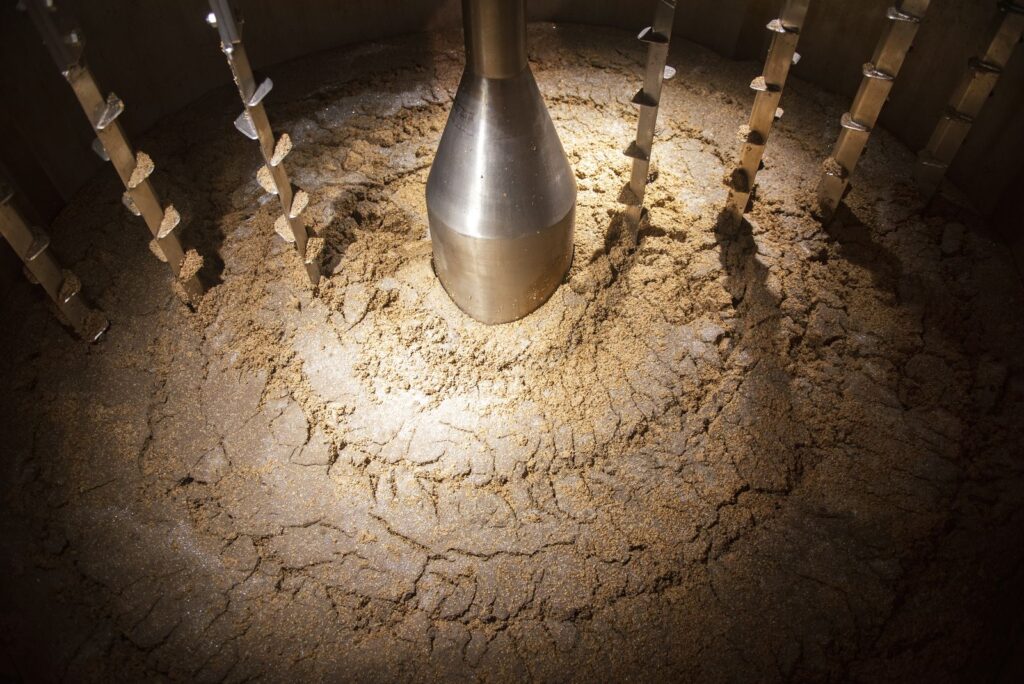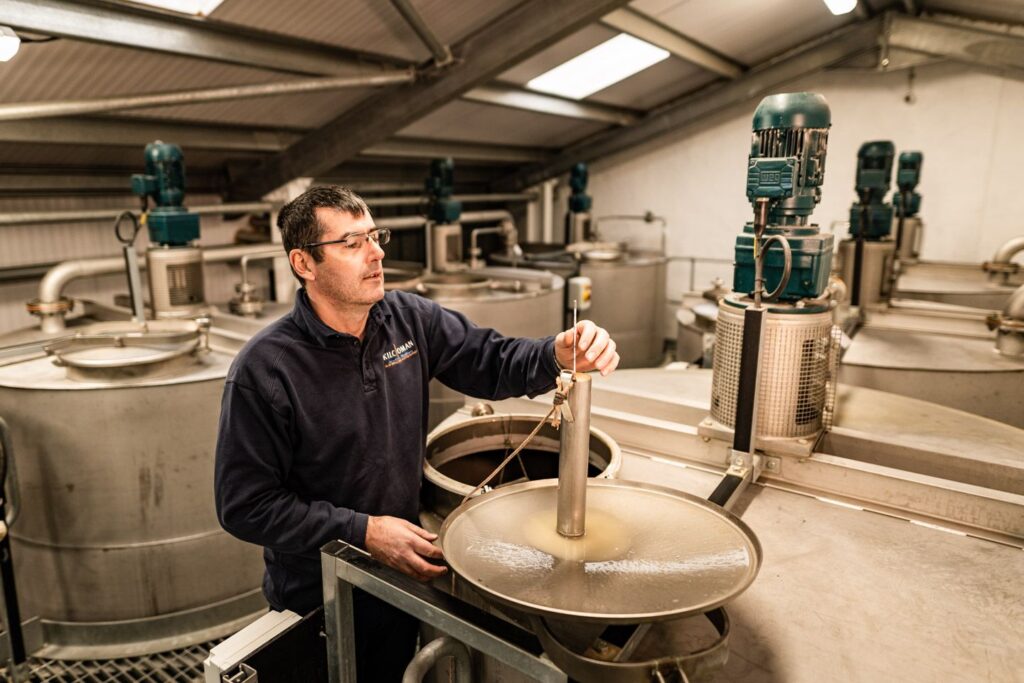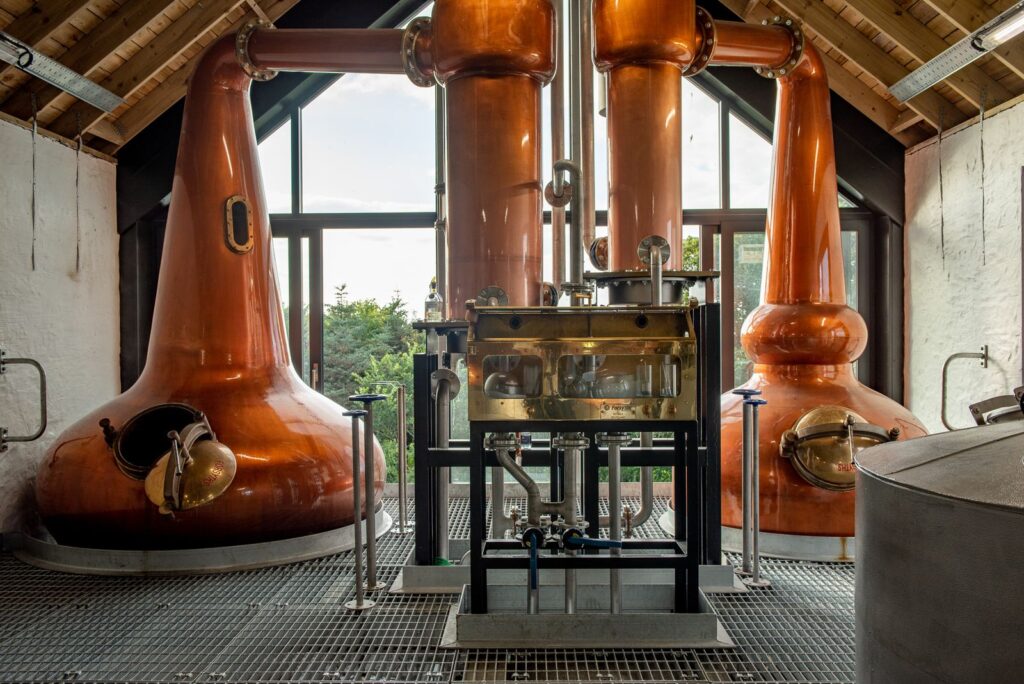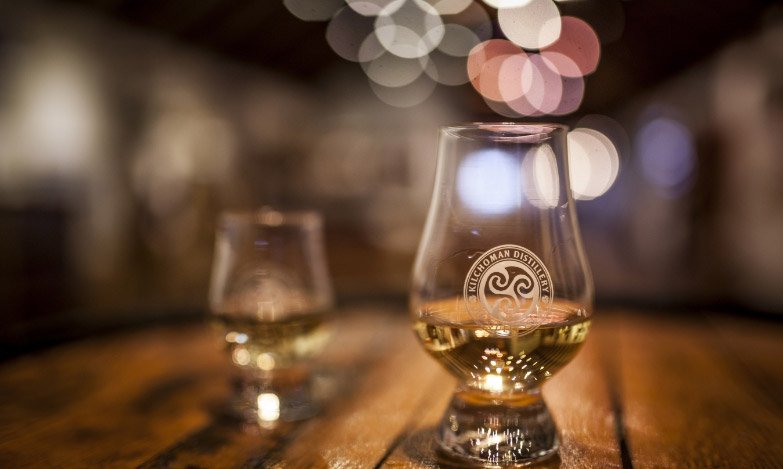Featured
Behind the Scenes: Mashing, Fermenting & Distilling
May 13, 2024The irreplaceable stages of whisky making are mashing, fermentation and distillation. No matter how big, small, industrial or traditional the distillery, you will always find these stages taking place. However, they tend to be some of the most overlooked parts of the process. Always feeling very sterile and scientific between distilleries. A lot of whisky enthusiasts focus on casks, or barley or on Islay – peat! But at Kilchoman every stage of our production is meticulously thought out, to ensure we create the best flavour possible.
First thing to point out, is that at Kilchoman we have two identical stillhouses, so whatever we have one of – we built it a twin! We first start with mashing. We like to think of this stage essentially like brewing a cup of tea. The hotter the water, the time it takes and the better the quality of the tea leaves, the better the flavour extraction. Mashing isn’t too far from this thinking.
We add grist (malted, milled barley) into our 1.2-ton mash tun and over the course of 6 hours we will add three increasingly hot waters to ensure we have fully extracted all the essential sugars and enzymes needed for the next stage. We start the first water at 64°C and finish the last water at 88°C allowing the hot water to pull out everything from the grist we need in order to make the whisky. We are then left with a sugary, peated barley water that we refer to as ‘wort’. We empty the mash tun of any residual grist (now known as ‘draff’) which we use as cow feed for our herd of pure breed Aberdeen Angus cows.

The wort continues its journey to fermentation in our washback’s. Our fermentation is the longest on Islay, lasting 90 hours, with the average time on Islay being between 50-60 hours. The longer time allows the yeast to fully ferment, and a secondary fermentation to take place giving the now 6-8% alcohol (we call this wash) a more fruity, sweet and complex depth of flavour which enhances our spirit overall.

Now, onto the main event – distillation! At Kilchoman we embrace the handmade traditions of whisky production, the stillhouse team won’t be seen in a computer room, they will be up and down the stillhouse cranking open the pipes by hand and turning the steam up to temperature.
We have two sets of stills that run simultaneously. First of all, we charge 3000 litres of the freshly made wash into our wash still where we heat it using pipes in the base, allowing steam to run through the pipes to heat the liquid inside. The liquid vaporises, travelling up the neck of the still and into the condenser where it will turn into 1000 litres of a 19% alcohol known as low wines (the other 2000 litres is called pot ale and we can use that as a fertiliser on our fields!) although 19% abv might be enough to get you feeling merry it is still not a high enough alcohol content for whisky, so it needs to be increased and perfected using the spirit still.
The spirit still works the same as the wash still but when the alcohol rises it needs to be separated into three cuts – heads (foreshots), hearts (new make spirit) and tails (feints). Only the ‘hearts’ are seen to be good enough to collect for distillation and at Kilchoman this is a small window between 76%abv- 65.5%abv. The other components are either too low or too high in alcohol and will be mixed in with the next batch of low wines to be distilled through the spirit still again. From the 3000 litres of wash we begin the process with, only 300 litres of that is new make spirit ready to be diluted to 63.5% and filled into casks.
Our spirit still is amongst the smallest in Scotland with a very tall and narrow neck, and we distil slowly, giving us our unique spirit. We also have a reflux ball (boil bulb) on our still, which aids in purifying the spirit, this allows the vapour to circulate and interact more with the copper, removing more heavy, oily compounds and resulting in a more defined, complex flavour. The size and shape of the still work to give us our unique clean, light and fruity spirit while keeping all the complex layers of flavour that we need to hold through maturation.

The end result is the Kilchoman DNA. Our casks will then go to work and create all our different expressions, but it is the new make spirit that gives Kilchoman it’s unique quality. There is no right or wrong, each distillery creates their own distinctive spirit through these whisky-making processes to ensure their DNA is representative of their distillery, we just push the boundaries a bit further to create something a little bit special!
READ NEXT
Featured
Kilchoman Day
This year marks a major milestone for Kilchoman: 20 years since we fired up the stills on our farm distillery in the west of Islay, becoming the first new distillery to be built on the island in over 120 years. Two decades later, we remain proudly independent, family run, and…
June 13, 2025

